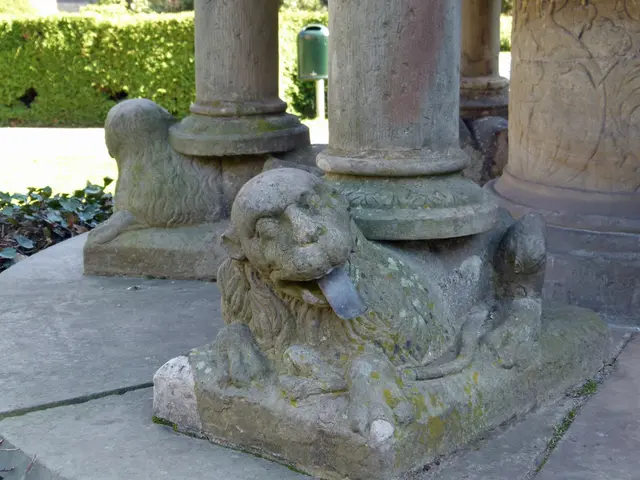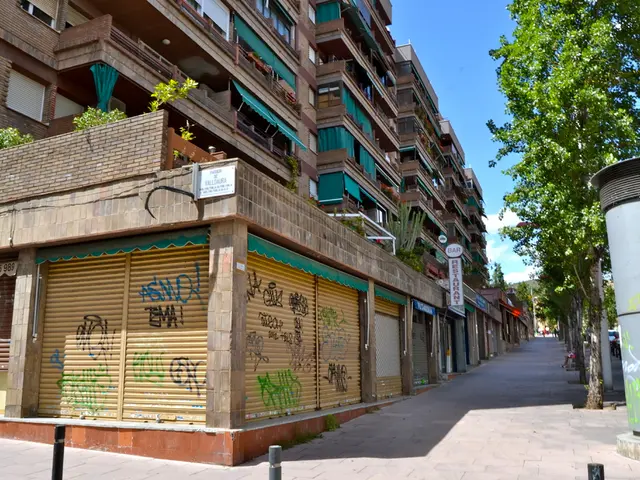Exploring The Brother and Elphinstone Reefs: Scuba Diving Adventure
The Egyptian Red Sea, a tropical haven stretching from the Suez Canal in the Sinai peninsula, is a magnet for diving enthusiasts from across Europe and beyond. With easy access from the UK and major European cities, this underwater paradise offers a wealth of opportunities for both novice and experienced divers alike.
Marsa Alam, a coastal town on the Red Sea's eastern shore, is fast becoming a hotspot for underwater photography, thanks to its vibrant coral reefs, diverse marine life, and crystal-clear waters. The area boasts some of the best dive sites in Egypt, catering to a range of preferences, from shallow house reefs to deep wreck dives.
Elphinstone Reef, one of Marsa Alam's most famous sites, is renowned for its dramatic drop-offs, strong currents, and thrilling encounters with large pelagic species. Advanced photographers will find dynamic compositions here, capturing big marine life and stunning coral formations. The reef's steep walls and swim-throughs provide ample opportunities for capturing unique underwater scenes.
Marsa Mubarak Reef, another standout site, is famous as the home of dugongs, which are rare to see and photograph. This location offers the chance to capture unique marine mammals alongside colourful reef fish and corals, making it ideal for those seeking extraordinary subjects.
Sataya Reef, or Dolphin House, is well-known for its playful dolphins, making it a prime spot to photograph these charismatic animals in their natural habitat. The reef itself is vibrant and teeming with tropical fish, perfect for wide-angle and action shots.
Marsa Abu Dabbab Bay is popular for frequent sightings of turtles and dugongs, and its calm waters and easy accessibility make it great for macro and wide-angle underwater photography. Samadai Reef, another excellent site, provides opportunities to capture dynamic marine life, from dolphins to rare critters like crocodile fish and pipefish.
Many dive camps in the area offer house reefs right by their beach, allowing photographers to spend as much time as they want capturing reef fish, corals, and smaller critters in well-protected environments.
Liveaboards depart from the "hub" areas of Sharm el-Sheikh, Hurghada, and Marsa Alam, covering a number of itineraries. Much of the best diving in Egypt is done by liveaboard, since many of the top sites are either inaccessible by dayboats or a long journey away.
The Brothers Islands and Elphinstone Reef are popular dive sites, known for their pelagic visitors and healthy coral reefs. Shark encounters are common here, with sightings on probably 75% of the dives. The sheer vertical structure of both the Brothers and Elphinstone makes it easy to shoot fish portraits at eye-level. However, the waters around the Brothers can get clouded by strong winds blowing grit off the islands' surfaces, making wide-angle underwater photography more challenging.
For the best photographic results, consider visiting during calm sea conditions and utilizing proper underwater camera setups to capture the vivid colours and marine life behaviour unique to the Red Sea at Marsa Alam. A 60mm macro lens can be useful for shooting Lionfish, Scorpionfish, Long-nosed Hawkfish, and other small creatures at the Brothers. For wide-angle underwater photography, a Tokina 10-17 fisheye or similar lens is recommended at the Brothers and Elphinstone.
Dive guides should brief divers on behaviour and safety protocols when diving with Oceanic Whitetip sharks, which are known to visit divers during safety stops and are curious, swimming directly at divers before veering away. During the trip, memorable shark moments occurred topside, with Silky sharks and an Oceanic Whitetip shark circling around the back of the dive platform for about 15 minutes.
The Numidia wreck, beginning at 8 meters / 24 feet and extending far down to about 90 meters / 270 feet, and the Aida, starting at about 30 meters / 90 feet and continuing down to about 60 meters, are encrusted with corals and highly photogenic.
Marsa Alam and Marsa Shagra offer great access to the Southern region, including the vast Fury Shoals reef system, as well as St. Johns, Rocky Island, and Zabargad, with unusual diving opportunities such as the chance to dive with dugongs and pods of dolphins.
With its well-developed dive tourism infrastructure, holiday operators offer a range of resort-based and liveaboard dive packages in Sharm el-Sheikh, Hurghada, and Marsa Alam. Egypt's Red Sea is an immensely popular stretch of water for diving, attracting thousands of European divers each month. So, whether you're a seasoned underwater photographer or a novice diver, Marsa Alam offers an unforgettable diving experience in the heart of the Red Sea.
- The Egyptian Red Sea, a vibrant destination extending from the Suez Canal in the Sinai peninsula, is a preferred travel choice for diving enthusiasts.
- Marsa Alam, a coastal town on the Red Sea's eastern shore, is rapidly gaining fame for its underwater photography opportunities due to its vibrant coral reefs and diverse marine life.
- Elphinstone Reef, a renowned dive site in Marsa Alam, offers advanced photographers dynamic compositions, capturing big marine life and stunning coral formations.
- The reef's steep walls and swim-throughs provide ample opportunities for capturing unique underwater scenes, making it an ideal travel destination for photographers.
- Marsa Mubarak Reef is famous for its resident dugongs, offering the chance to capture unique marine mammals alongside colorful reef fish and corals.
- Sataya Reef, also known as Dolphin House, is renowned for its playful dolphins, providing opportunities to photograph these charismatic animals in their natural environment.
- Macro photography enthusiasts will find the shallow waters of Marsa Abu Dabbab Bay ideal for capturing small creatures like Lionfish, Scorpionfish, Long-nosed Hawkfish, and other intriguing subjects.
- Liveaboards, departing from Sharm el-Sheikh, Hurghada, and Marsa Alam, cover various itineraries, including the popular dive sites of the Brothers Islands and Elphinstone Reef.
- For wide-angle underwater photography, a Tokina 10-17 fisheye or similar lens is recommended at the Brothers and Elphinstone.
- Divers should be guided on behavior and safety protocols when encountering Oceanic Whitetip sharks, known to visit divers during safety stops and exhibit curious behavior.
- The Numidia wreck, starting at 8 meters and extending down to about 90 meters, and the Aida, starting at about 30 meters and continuing down to about 60 meters, are photogenic underwater attractions, heavily encrusted with corals.
- Whether a seasoned underwater photographer or a novice diver, Marsa Alam promises an unforgettable diving experience in the heart of the Red Sea, with its diverse marine life, vibrant coral reefs, and unique diving opportunities.




